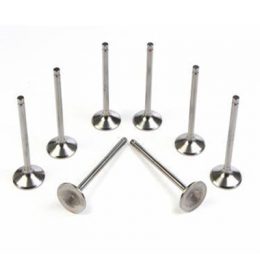Maximizing Marine Cylinder Liner Lifespan
Maximizing Marine Cylinder Liner Lifespan
Marine cylinder liners play an important role in the performance and longevity of marine engines. They are subject to various stresses and operating conditions that can impact their lifespan, requiring proper installation, maintenance, and operation techniques to maximize their life expectancy. In this article, we will discuss the factors that affect marine cylinder liner lifespan, proper installation and maintenance techniques, best practices for operating cylinder liners, inspection and testing methods, and troubleshooting issues that arise with these liners.
Factors Affecting Marine Cylinder Liner Lifespan
The lifespan of marine cylinder liners is influenced by various factors, including engine design, fuel quality, lubrication, cooling system efficiency, and operating conditions. Poor fuel quality can lead to excessive wear on liners, while inadequate cooling can cause thermal stress and cracking. Engine design also plays a critical role, with factors such as liner thickness, material selection, and manufacturing quality affecting the durability of liners.
Proper Installation and Maintenance Techniques
Proper installation and maintenance techniques are crucial for maximizing the lifespan of marine cylinder liners. During installation, liners should be carefully inspected for any defects or damage, and installed with the correct torque specification to ensure a tight seal. Cylinder liners should also be regularly inspected for wear and tear during routine maintenance, with any issues addressed immediately to prevent further damage or failure.
Best Practices for Operating Marine Cylinder Liners
To ensure the longevity of marine cylinder liners, proper operating techniques should be followed. Engine loads should be kept within the recommended range to prevent excessive wear, and operational parameters such as fuel quality, lubrication, and cooling should be regularly monitored and adjusted as needed. Proper maintenance of the engine and its components is also essential, including regular oil changes and inspections of the cooling system.
Inspection and Testing Methods for Marine Cylinder Liners
Regular inspection and testing of marine cylinder liners can help identify issues before they become major problems. Visual inspections can reveal signs of wear, corrosion, or cracking, while non-destructive testing techniques such as ultrasonic testing can be used to detect flaws or defects that are not visible to the naked eye. Pressure testing can also be used to verify the integrity of the liner.
Troubleshooting and Addressing Issues with Marine Cylinder Liners
When issues arise with marine cylinder liners, prompt action should be taken to prevent further damage or failure. Common issues include liner wear, cracking, and corrosion, which can be caused by improper fuel quality, inadequate cooling, or other operating conditions. When troubleshooting these issues, it is important to identify the root cause and take corrective action to prevent the issue from recurring.
Proper installation, maintenance, and operation techniques are essential for maximizing the lifespan of marine cylinder liners. By following best practices and regularly inspecting and testing these components, operators can identify and address issues before they become major problems, ensuring the efficiency and performance of marine engines.
- 5 types of vessel repair: Annual repair, Ship Voyage repair
- 5 Ways to Extend the Life of Your Diesel Engine Crankshaft
- Marine Engine Bed Plate
- Marine Sliding Intermediate Bearing
- Exploring Marine Diesel Engine Connecting Rods: Anatomy, Materials, Design and Maintenance
- 2 Types of Rudders and how the rudder works on a ship?



